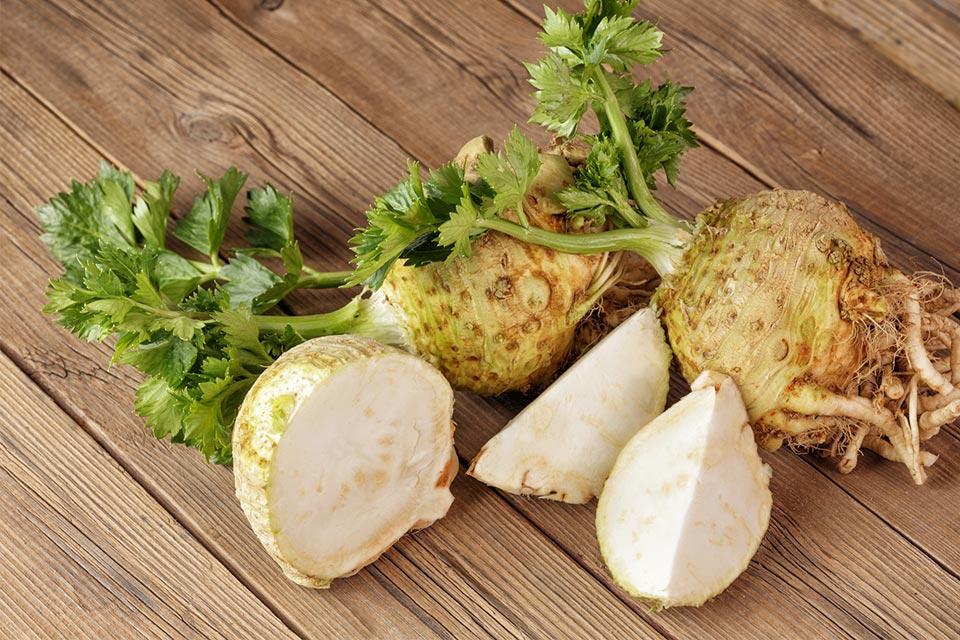Celery root, also known as celeriac, knob celery or turnip-rooted celery, may not be the most attractive vegetable in the produce section, but it has a lot to offer. As far back as 800 B.C., celery root was used for religious and medicinal purposes — it was even thought to be an aphrodisiac. Beneath its gnarly, rough skin lives a crisp, white flesh that tastes like a mix between celery and parsley. Celery root is available year-round, and you might want to add it to your grocery list.

Why eat celery root?
Celery root contains antioxidants that help combat inflammation, and it’s also a good source of vitamin B-complex, vitamin C and vitamin K. What’s more, it has high amounts of dietary fiber, which help promote gut and heart health. Plus, it’s got essential minerals such as magnesium, phosphorus and potassium. Unlike other root vegetables, celery root has a mild flavor and is relatively low in calories and carbohydrates. The high levels of nutrients and waist-friendly calorie content make celery root a great substitute for potatoes — now that’s delicious!
How to eat celery root:
Breakfast
Miss your morning hash browns? Never fear, celery root is here! Heat one tablespoon of olive oil over medium heat in a frying pan. Peel the celery root and grate it using a cheese grater or food processor. Toss it in the pan and cook until it is tender and slightly browned. Season it with salt and pepper and serve it with your eggs for a tasty, filling breakfast.
Dinner
Cooked celery root has a soft, creamy consistency. For a lower calorie version of mashed potatoes, rinse and peel two to three medium celery root bulbs. Cut the bulbs into large chunks and boil until tender. Strain water and mash the celery root until it has the consistency of mashed potatoes. Add in three tablespoons of milk (more or less for desired consistency), maybe a smidge of butter and garnish with salt and pepper. Voila! You’ve just made a tasty, nutrient-rich side dish.
